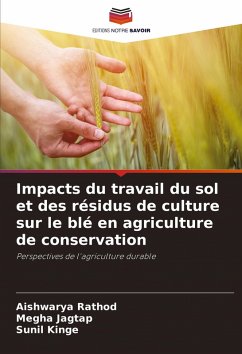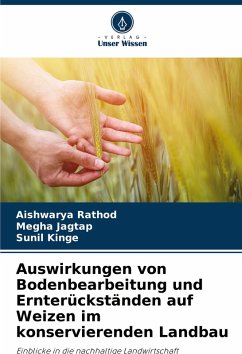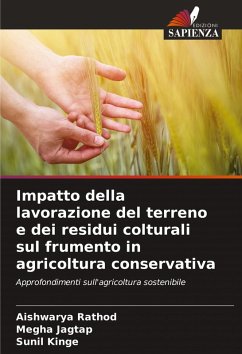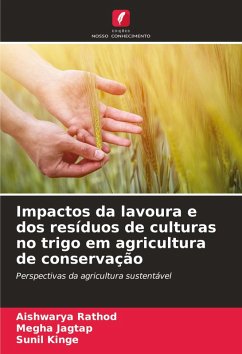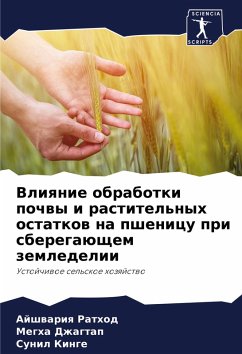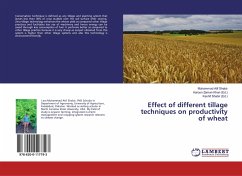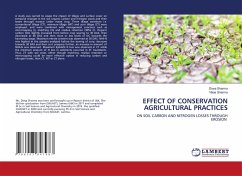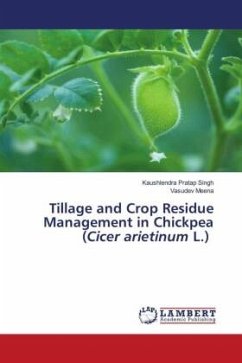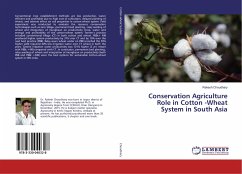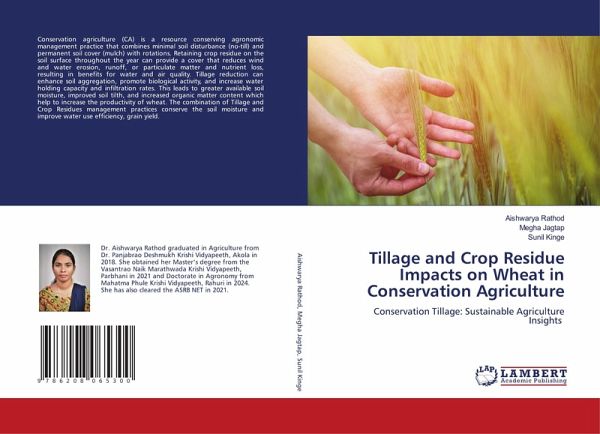
Tillage and Crop Residue Impacts on Wheat in Conservation Agriculture
Conservation Tillage: Sustainable Agriculture Insights
Versandkostenfrei!
Versandfertig in 6-10 Tagen
45,99 €
inkl. MwSt.

PAYBACK Punkte
23 °P sammeln!
Conservation agriculture (CA) is a resource conserving agronomic management practice that combines minimal soil disturbance (no-till) and permanent soil cover (mulch) with rotations. Retaining crop residue on the soil surface throughout the year can provide a cover that reduces wind and water erosion, runoff, or particulate matter and nutrient loss, resulting in benefits for water and air quality. Tillage reduction can enhance soil aggregation, promote biological activity, and increase water holding capacity and infiltration rates. This leads to greater available soil moisture, improved soil t...
Conservation agriculture (CA) is a resource conserving agronomic management practice that combines minimal soil disturbance (no-till) and permanent soil cover (mulch) with rotations. Retaining crop residue on the soil surface throughout the year can provide a cover that reduces wind and water erosion, runoff, or particulate matter and nutrient loss, resulting in benefits for water and air quality. Tillage reduction can enhance soil aggregation, promote biological activity, and increase water holding capacity and infiltration rates. This leads to greater available soil moisture, improved soil tilth, and increased organic matter content which help to increase the productivity of wheat. The combination of Tillage and Crop Residues management practices conserve the soil moisture and improve water use efficiency, grain yield.





